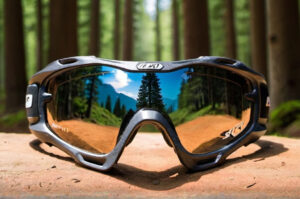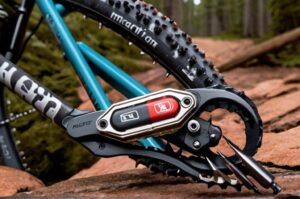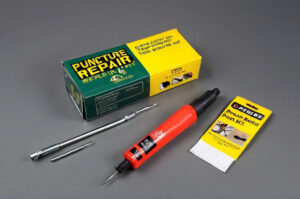Table of Contents
Introduction to Mountain Bike Glasses
Proper eyewear is an essential component of mountain biking that provides both safety and comfort. The rugged trails and varying conditions can present several hazards such as flying debris, UV rays, and harsh weather conditions. Mountain biking glasses shield your eyes from these elements, ensuring you stay focused on the trail.
Common hazards encountered during mountain biking include dust, mud, twigs, and insects. Additionally, changing light conditions and UV exposure can strain your eyes. Different riding environments, from densely wooded trails to open, sunny paths, necessitate specific types of lenses and frames for optimal vision and protection.
Mountain bike glasses come in various designs, from full-frame to frameless and everything in between. The right fit and frame are crucial for both comfort and performance. High-quality eyewear with a good fit prevents slipping, offers enhanced vision, and provides the necessary protection from potential hazards on the trail.
Understanding the Different Types of Mountain Bike Glasses
When choosing MTB glasses, understanding the types of lenses available is paramount. Polycarbonate lenses are a popular option due to their impact resistance and lightweight nature. Photochromic lenses adapt to changing light conditions, darkening in bright light and lightening in low light, offering versatility for different environments. Polarized lenses reduce glare, making them ideal for sunny conditions or reflective surfaces.
The design of the frame also plays a critical role in the functionality of mountain bike glasses. Full-frame designs provide maximum durability and structure, while half-frame and frameless glasses offer a lighter feel and broader field of vision. The choice between these designs depends on individual preferences and the specific riding conditions.
Beyond the design, the eyewear’s impact resistance and durability are non-negotiable. Tough terrains and high speeds necessitate glasses that can withstand impacts without breaking. Additionally, UV protection is crucial for safeguarding your eyes from the long-term effects of sun exposure. Advanced lens technologies often include coatings for added scratch resistance and enhanced clarity.
Factors to Consider When Choosing the Frame
The material of the frame significantly influences the comfort and durability of mountain bike glasses. Frames made from plastic are lightweight and generally more affordable, whereas metal and composite materials offer greater robustness and flexibility. The choice of material should balance between weight, comfort, and durability.
Weight and balance are critical considerations, especially for long rides. Heavier frames might prove uncomfortable during extended use, while well-balanced glasses enhance stability and comfort. Durability and flexibility are also vital, as mountain biking often subjects eyewear to bending, twisting, and impacts.
Another essential feature is ventilation. Properly ventilated glasses reduce the risk of fogging, ensuring clear vision throughout the ride. Look for designs with strategically placed vents or anti-fog technologies to maintain clear sight lines regardless of the weather conditions or exertion levels.
Importance of Fit for Mountain Bike Glasses
Securing a proper fit is crucial for ensuring that your mountain bike glasses stay in place during rigorous rides. A snug fit prevents the glasses from slipping due to sweat or bumpy terrains. Adjustable nose pads and temple arms allow for personalized adjustments, accommodating different face shapes and sizes for a secure fit.
It’s advisable to try your new glasses with your helmet, as this can affect the fit and comfort. Ensuring compatibility between your glasses and helmet can prevent pressure points and ensure that neither interferes with the other during your ride. This integrated approach to fitting guarantees better all-around performance.
Peripheral vision and coverage are also essential considerations. The glasses should not obstruct your field of view, which is critical for spotting obstacles and navigating trails safely. Opt for designs that offer wide lenses and minimal frame interference to maintain clear and unobstructed vision.
Lens Selection and its Impact on Fit and Performance
The color and type of lenses can significantly affect both fit and performance. Different lens colors offer various benefits; for example, amber or yellow lenses enhance contrast in low light, while gray or brown lenses are ideal for bright conditions as they reduce overall brightness without distorting colors.
Interchangeable lenses allow for flexibility in changing light conditions and environments. Glasses with easily switchable lenses enable riders to adapt to varying conditions without needing multiple pairs of glasses. Anti-fog and anti-scratch coatings further enhance the functionality and longevity of the lenses.
If you require prescription lenses, many mountain bike glasses brands offer compatible options. Prescription inserts or custom lenses ensure you have the correct vision correction while still benefiting from all the protective features of mountain biking eyewear. Whether prescription or non-prescription, choosing the right lens enhances both safety and performance.
Maintenance and Care for Long-lasting Performance
Maintaining your mountain bike glasses properly is crucial for ensuring long-lasting performance. Regular cleaning of the lenses with appropriate solutions prevents scratches and keeps vision clear. It’s best to use a microfiber cloth and avoid harsh chemicals that could damage the lens coatings.
Safe storage is equally essential. Utilize hard cases or protective pouches to store your glasses when not in use. This prevents accidental damage and maintains the shape and integrity of the frames and lenses.
Routine inspection for damage or wear is important. Check for any cracks, loose parts, or lens scratches regularly. Most reputable brands offer replacement parts and warranty services, making it easier to maintain your glasses in optimum condition over time.
Top Brands and Models for Mountain Bike Glasses
Several brands stand out for their quality and performance in mountain biking glasses. Oakley is well-known for its advanced lens technologies and robust frames. Smith offers a range of high-performance eyewear known for its durability and fit. Julbo provides a variety of options with photochromic lenses and excellent peripheral vision.
Different models from these brands come with varied features. For instance, Oakley’s Prizm lenses enhance contrast and color, making it easier to see details on the trail. Smith’s ChromaPop technology offers similar benefits, while Julbo’s Reactiv lenses adjust quickly to changing light conditions.
User reviews and ratings can provide invaluable insights into the performance and comfort of these glasses on actual trails. Checking out the price range and where to buy also ensures you get the best deal for your needs. Both online retailers and local bike shops often offer a wide selection and the guidance to help make an informed choice.
Conclusion and Final Tips
Choosing the right mountain bike glasses involves several key considerations, including the type of lenses, frame material, fit, and additional features. Each of these factors contributes to the overall performance and comfort of the eyewear, directly impacting your safety and enjoyment on the trail.
Personalized fit tips, such as testing the glasses with your helmet and considering adjustable features, can make a significant difference in comfort and functionality. It’s essential to prioritize both safety and comfort when selecting the best frame for biking glasses.
Finally, don’t hesitate to visit local bike shops or read online reviews to find the best options available. Investing in quality MTB eyewear ensures you’ll have a clear vision and protection, enhancing your overall riding experience. Stay safe and enjoy your ride!







